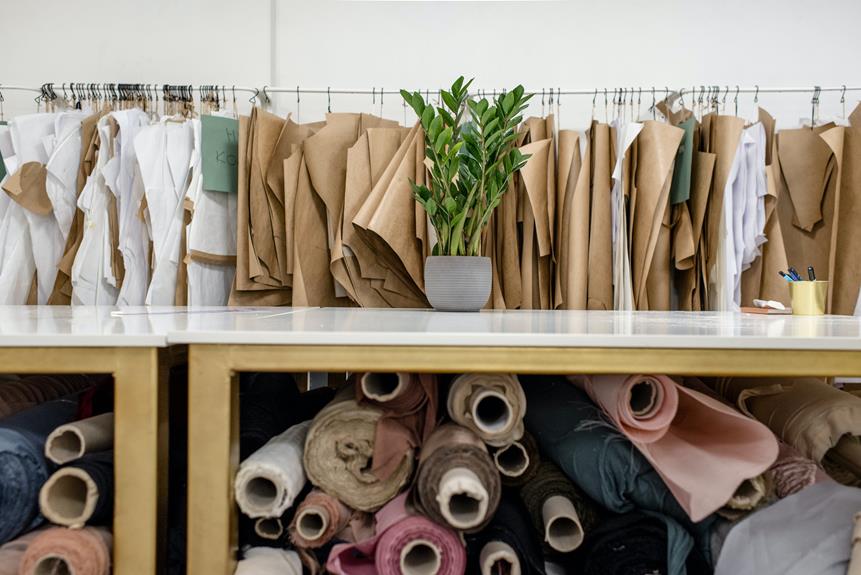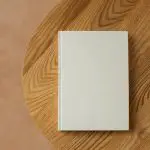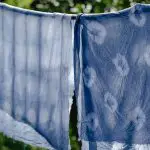When it comes to sewing, understanding the fabric bolt width is like unlocking a secret code. Knowing how to measure it accurately can make a world of difference in your projects. So, let's dive in and demystify the process.
You'll need a measuring tape and a flat surface to get started. By following a few simple steps, you can confidently measure the fabric bolt width like a pro.
No more guesswork or uncertainty. Just clear, precise measurements that will ensure your projects turn out exactly as you envision.
Let's get ready to measure and conquer those fabric bolts!
Key Takeaways
- Fabric bolt width is crucial for sewing and crafting projects.
- Different fabric bolts have varying widths, with standard widths being 36, 45, 54, 60, and 72 inches.
- Measuring tape and yardstick are essential tools for accurate measurements.
- Proper measurements contribute to the overall success of your sewing or crafting project.
Understanding Fabric Bolt Width
You can easily understand fabric bolt width by measuring the width of the fabric bolt using a measuring tape or ruler. Fabric bolt types can vary, and it's essential to know the width of the fabric bolt you're working with to ensure it suits your project.
Fabric width variations are common, with bolts typically coming in standard widths of 36, 45, 54, 60, and 72 inches. Some specialty fabrics may have different widths, so it's crucial to check the bolt to determine the exact width.
When measuring the fabric bolt width, lay the bolt on a flat surface and unwind a small section. Use a measuring tape or ruler to measure from one edge of the fabric to the other. This measurement is the width of the fabric bolt.
Understanding fabric bolt width is crucial for planning your sewing or crafting projects. It allows you to determine how much fabric you need and whether the width will accommodate your pattern or design. By familiarizing yourself with different fabric bolt types and their width variations, you can confidently choose the right fabric for your creations.
Tools Needed for Measuring
To measure fabric bolt width accurately, you'll need a measuring tape.
For larger bolts, a yardstick will come in handy.
These simple tools will ensure that you get precise measurements every time.
Measuring Tape for Accuracy
When measuring fabric bolt width, ensure accuracy by using a measuring tape to get precise measurements. Here are some tips for using a measuring tape effectively:
- Use the right tape: Ensure you use a flexible, fabric measuring tape for accurate results.
- Lay the fabric flat: Avoid stretching or bunching up the fabric when measuring to prevent inaccuracies.
- Read the measurement carefully: Ensure the tape is straight and not twisted, then read the measurement at eye level for accuracy.
- Double-check your measurements: It's easy to make mistakes, so always double-check your measurements to ensure precision.
Yardstick for Larger Bolts
For larger bolts, a yardstick is an essential tool for measuring fabric width accurately. When handling large fabric bolts, it's crucial to have the right tools to ensure precision in your measurements.
A yardstick provides a sturdy and reliable means of measuring large bolts, allowing you to easily determine the width of the fabric. To use a yardstick for measuring large bolts, simply lay the bolt on a flat surface and unroll a section of the fabric. Then, place the yardstick at one end of the fabric and extend it along the width, ensuring it remains straight and flat.
This method of measuring large bolts provides a straightforward and dependable way to obtain accurate fabric width measurements, essential for various sewing and crafting projects.
Step-by-Step Measurement Process
Using a tape measure, start by unrolling the fabric bolt on a flat surface.
To measure the fabric bolt width accurately, follow these steps:
- Align the fabric: Smooth out any wrinkles or folds in the fabric, ensuring it lays flat and the edges are straight. This step is crucial for obtaining an accurate measurement.
- Place the tape measure: Position the tape measure at one end of the fabric bolt, ensuring it's aligned with the edge. Be careful not to stretch or pull the fabric while measuring.
- Read the measurement: Extend the tape measure across the width of the fabric, stopping at the opposite edge. Read the measurement at the point where the tape measure meets the fabric edge. Repeat this process in a few different spots to ensure consistency.
- Record the width: Once you've obtained multiple measurements, record the narrowest width to account for any fabric width variations. This ensures that the pattern pieces fit properly when using the fabric.
Dealing With Irregular Bolt Ends
Dealing with irregular bolt ends can be a challenge, but there are ways to handle it with ease.
When you encounter uneven fabric ends, it's important to manage them effectively to ensure accurate measurements.
Handling Uneven Fabric Ends
To measure fabric bolt width accurately, assess the uneven ends by aligning the fabric edges for a precise measurement. When dealing with irregular bolt ends, follow these steps to handle the uneven fabric ends:
- Trim the Excess: Use fabric cutting tools to trim any excess or uneven fabric at the ends. This will create a straight edge for accurate measurement.
- Straighten the Fabric: Gently pull the fabric to straighten it out, ensuring that the ends are aligned before measuring. This will help you get an accurate width measurement.
- Adjust Fabric Usage: If the unevenness is significant, consider adjusting your fabric usage to accommodate the irregular ends. This may involve altering your cutting and sewing plans to work around the irregularities.
- Make Precise Cuts: When cutting your fabric for a project, take extra care to make precise cuts along the straightened edges. This will ensure that your project turns out as intended.
Managing Irregular Fabric Edges
When managing irregular fabric edges, address any uneven bolt ends by employing methods to ensure an accurate measurement and smooth handling. Begin by carefully inspecting the irregular edges to identify any damaged or frayed sections. Use fabric cutting tools to trim away any irregularities, ensuring that the edges are straight and aligned. This won't only improve the appearance of the fabric but also facilitate accurate measurements and easier handling during fabric inventory.
Additionally, consider using a fabric selvage to guide your cutting, as it often provides a straight and stable edge. By taking these steps, you can effectively manage irregular fabric edges, ensuring that your fabric bolts are neatly trimmed and suitable for your projects.
Interpreting Fabric Width Labels
When measuring fabric bolt width, you should always look for the label indicating the fabric width. Understanding fabric width labels is essential for ensuring you purchase the right amount of fabric for your project.
Here are some key points to consider when interpreting fabric width labels:
- Fabric Width Variations: Fabric width can vary based on the type of fabric. For example, while quilting cotton is typically 44 inches wide, home decor fabric may be 54 inches wide. Understanding these variations helps you plan your projects more accurately.
- Standard Measurements: Fabric width labels often display the width in both inches and centimeters. Familiarize yourself with these measurements to ensure you're selecting the appropriate amount of fabric for your needs.
- Account for Seams and Pattern Repeats: Some fabrics have pattern repeats or require extra width for seam allowances. The fabric width label can provide important information about pattern repeats and the total usable width of the fabric.
- Consult Store Staff: If you're unsure about interpreting a fabric width label, don't hesitate to ask store staff for clarification. They can provide valuable insights to ensure you make an informed decision.
Understanding fabric width labels empowers you to confidently select the right fabric for your projects, avoiding unnecessary waste or shortage.
Tips for Accurate Measurements
Once you have located the fabric width label, carefully measure the width of the fabric bolt using a reliable measuring tape. When measuring, ensure that the fabric is spread out evenly and there are no wrinkles that could affect the accuracy of your measurements. Here are some tips to ensure accurate measurements:
Tips for Accurate Measurements
| Tips for Accurate Measurements | Details |
|---|---|
| Fabric bolt storage | Store fabric bolts in a way that prevents them from being compressed, which could alter their width. Ideally, store them standing upright on shelves or racks. |
| Fabric bolt cutting | When cutting fabric from the bolt, use sharp scissors or a rotary cutter to ensure clean, precise cuts. Take care to cut straight lines to maintain the fabric's original width. |
Proper storage and cutting techniques are essential for obtaining accurate fabric width measurements. By following these tips, you can ensure that your measurements are precise and reliable, leading to successful sewing and crafting projects.
Frequently Asked Questions
Can I Use the Same Measurement Process for Both Woven and Knit Fabrics?
Yes, you can use the same measurement process for both woven and knit fabrics. Consider fabric weight, texture, drape, and care instructions. Be mindful of stretch fabrics and potential shrinkage to ensure accurate measurements.
Are There Any Special Considerations When Measuring Fabric With a Pattern or Print?
When measuring patterned fabric, ensure the pattern is aligned and not distorted. Consider print placement and fabric width accuracy. Look for clear labels indicating the width, as patterns may affect the usable area.
How Do I Measure the Width of a Fabric Bolt That Is Not Perfectly Straight?
To measure the width of a fabric bolt with irregular edges or curvature, place a straightedge along the longest part and measure the distance from edge to edge. Repeat at different points for accuracy.
Is There a Difference in Measurement Techniques for Standard Width Bolts Versus Extra-Wide Bolts?
When measuring fabric bolt width, the technique is generally the same for standard and extra-wide bolts. Consider fabric weight and texture as these may affect accurate measurement. Ensure that the fabric is laid out flat for the most precise results.
What Should I Do if the Fabric Width Label Is Missing or Unclear?
If the fabric width label is missing or unclear, measure the width of the fabric bolt at multiple points to account for any variations. Use a straight edge to measure irregular edges for accuracy.
- Where Does Hemp Come From? - April 22, 2024
- Why Do People Eat Hemp? - April 22, 2024
- Is Hemp Safe for Humans? - April 22, 2024







